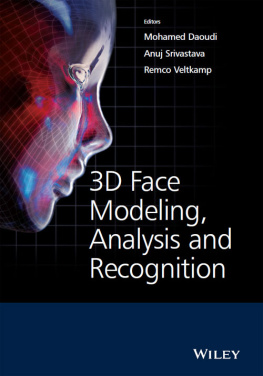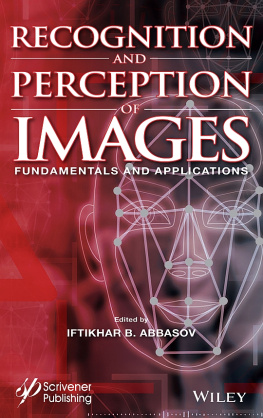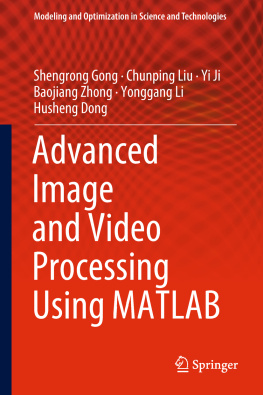This edition first published 2013
2013, John Wiley & Sons Ltd
Registered office
John Wiley & Sons Ltd, The Atrium, Southern Gate, Chichester, West Sussex, PO19 8SQ, United Kingdom
For details of our global editorial offices, for customer services and for information about how to apply for permission to reuse the copyright material in this book please see our website at www.wiley.com .
The right of the author to be identified as the author of this work has been asserted in accordance with the Copyright, Designs and Patents Act 1988.
All rights reserved. No part of this publication may be reproduced, stored in a retrieval system, or transmitted, in any form or by any means, electronic, mechanical, photocopying, recording or otherwise, except as permitted by the UK Copyright, Designs and Patents Act 1988, without the prior permission of the publisher.
Wiley also publishes its books in a variety of electronic formats. Some content that appears in print may not be available in electronic books.
Designations used by companies to distinguish their products are often claimed as trademarks. All brand names and product names used in this book are trade names, service marks, trademarks or registered trademarks of their respective owners. The publisher is not associated with any product or vendor mentioned in this book.
Limit of Liability/Disclaimer of Warranty: While the publisher and author have used their best efforts in preparing this book, they make no representations or warranties with respect to the accuracy or completeness of the contents of this book and specifically disclaim any implied warranties of merchantability or fitness for a particular purpose. It is sold on the understanding that the publisher is not engaged in rendering professional services and neither the publisher nor the author shall be liable for damages arising herefrom. If professional advice or other expert assistance is required, the services of a competent professional should be sought.
Library of Congress Cataloging-in-Publication Data
Daoudi, Mohamed, 1964
3D face modeling, analysis, and recognition / Mohamed Daoudi, Anuj Srivastava, Remco Veltkamp.
pages cm
Includes bibliographical references and index.
ISBN 978-0-470-66641-8 (cloth)
1. Three-dimensional imaging. 2. Human face recognition (Computer science) 3. Face--Computer simulation. I. Srivastava, Anuj, 1968 II. Veltkamp, Remco C., 1963 III. Title. IV. Title: Three dimensional face modeling, analysis, and recognition.
TA1637.D365 2013
006.693dc23
2013005799
A catalogue record for this book is available from the British Library
ISBN: 9780470666418
Preface
Introduction
The human face has long been an object of fascination, investigation, and analysis. It is so familiar to our visual cognition system that we can recognize a persons face in difficult visual environments, that is, under arbitrary lighting conditions and pose variation. A common question to many researchers is whether a computer vision system can process and analyze 3D face as the human vision system does. In addition to understanding human cognition, there is also increasing interest in analyzing shapes of facial surfaces for developing applications such as biometrics, humancomputer interaction (HCI), facial surgery, video communications, and 3D animation.
Because facial biometrics is natural, contact free, nonintrusive, and of psychological interest, it has emerged as a popular modality in the biometrics community. Unfortunately, the technology for 2D image-based face recognition still faces difficult challenges. Face recognition is made difficult by data variability caused by pose variations, lighting conditions, occlusions, and facial expressions. Because of the robustness of 3D observations to lighting conditions and pose variations, face recognition using shapes of facial surfaces has become a major research area in the last few years. Many of the state-of-the-art methods have focused on the variability caused by facial deformations, for example, those caused by face expressions, and have proposed methods that are robust to such shape variations.
Another important use of 3D face analysis is in the area of computer interaction . As machines become more and more involved in everyday human life and take on increasing roles in both their living and work spaces, they need to become more intelligent in terms of understanding human moods and emotions. Embedding these machines with a system capable of recognizing human emotions and mental states is precisely what the HCI research community is focused on. Facial expression recognition is a challenging task that has seen a growing interest within the research community, impacting important applications in fields related to HCI. Toward building human-like emotionally intelligent HCI devices, scientists are trying to include identifiers of the human emotional state in such systems. Recent developments in 3D acquisition sensors have made 3D data more readily available. Such data help alleviate problems inherent in 2D data such as illumination, pose, and scale variations as well as low resolution.
The interest in 3D facial shape analysis is fueled by the recent advent of cheaper and lighter scanners that can provide high resolution measurements of both geometry and texture of human facial surfaces. One general goal here is to develop computational tools for analyzing 3D face data. In particular, there is interest in quantifiably comparing the shapes of facial surfaces. This can be used to recognize human beings according to their facial shapes, to measure changes in a facial shape following a surgery, or to study/capture the variations in facial shapes during conversations and expressions of emotions. Accordingly, the main theme of this book is to develop computational frameworks for analyzing shapes of facial surfaces . In this book, we use some basic and some advanced tools from differential geometry, Riemannian geometry, algebra, statistics, and computer science to develop the desired algorithms.
Scope of the book
This book, which focuses on 3D face modeling, processing, and applications, is divided into five chapters.
Chapter 1 provides a brief overview of successful ideas in the literature, starting with some background material and important basic ideas. In particular, the principles of depth from triangulation and shape from shading are explained first. Then, an original 3D face (static or dynamic) modeling-guided taxonomy is proposed. Next, a survey of successful approaches that have led to commercial systems is given in accordance with the proposed taxonomy. Finally, a general review of these approaches according to factors that are intrinsic factors (spatial and temporal resolutions, depth accuracy, sensor cost, etc.) and extrinsic (motion speed, illumination changes, face details, intrusion and need for user cooperation, etc.) are provided.
Chapter 2 discusses the state of the art in 3D surface features for the recognition of the human face. Particular emphasis is laid on the most prominent and recent contributions. The features extracted from 3D facial surfaces serve as means for dimensionality reduction of surface data and for facilitating the task of face recognition. The complexity of extraction, descriptiveness, and robustness of features directly affect the overall accuracy, performance, and robustness of the 3D recognition system.
Chapter 3 presents a novel geometric framework for analyzing 3D faces, with specific goals of comparing, matching, and averaging their shapes. In this framework, facial surfaces are represented by radial curves emanating from the nose tips. These curves, in turn, are compared using elastic shape analysis to develop a Riemannian framework for full facial surfaces. This representation, along with the elastic Riemannian metric, seems natural for measuring facial deformations and is robust to data issues such as large facial expressions. One difficulty in extracting facial curves from the surface of 3D face scans is related to the presence of noise. A possible way to smooth the effect of the noise without losing the effectiveness of representations is to consider aggregates of facial curves, as opposed to individual curves, called iso-geodesic stripes .








